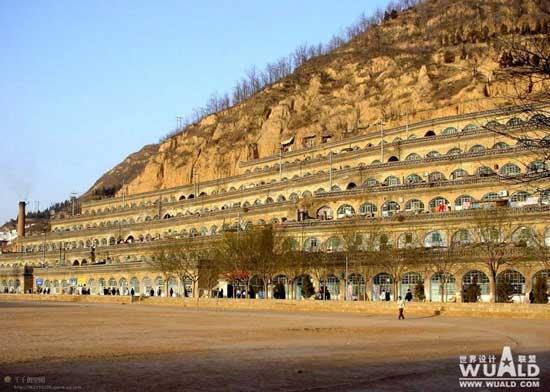China's Yan'an to bid farewell to cave city

 0 Comment(s)
0 Comment(s) Print
Print E-mail CNTV, February 28, 2014
E-mail CNTV, February 28, 2014
The northwestern Chinese city of Yan'an is known as the "red cradle" of the Chinese revolution. The city in Shaanxi province, northwest China, is also famous for its cave dwellings known as yaodong. Tens of thousands of people have lived in them for generations. But the rainstorms of last summer exposed the vulnerability of those homes. And the remaining residents are being relocated to safer places.
Gao Wenying has been living in a yaodong, or cave dwelling, since he was born. For him, no home could be more comfortable-- warm in winter and cool in summer. He never considered living anywhere else until a massive downpour battered the city last July.
“The rainstorm damaged one of my cave houses and it was too dangerous to live in. The side wall was washed away. We really lost a lot.” Gao said.
The downpour destroyed more than 70,000 yaodong, leaving more than 220,000 people homeless. Nearly a third of Yan’an residents still live in cave houses, most in rural areas.
Many local residents consider the cave houses to be the foundation of their life. Relocation is proving to be a tough decision for them, but due to safety concerns and better urban planning, local authorities say they will help residents start a new life with compensation and subsidies.
A detailed subsidy policy is still under discussion. Gao Wenying and his neighbors will continue talks with the local government until an acceptable agreement is reached.
Most visitors come to Yan’an for the cave dwellings and its place in the revolution. Many fear relocation will mean the loss of the unique cave culture. Local authorities say they won’t let that happen.
“Some traditional cave dwellings will be preserved for sightseeing. And in rural areas, we can build communities like this. Modern technology combined with solid bricks will produce high quality cave-style buildings.” Yang Zhiqi, director of Yan’an Urban Rural Planning Department, said.
The newly planned community will have electricity, water, road and other modern facilities.
Over the next five to eight years, residents of cave houses in landslide-prone areas are expected to be relocated.
As the standard of living rises, we may see fewer and fewer traditional cave dwellings. But in both urban and rural areas, new cave-style buildings will bring the best of the past into the present.





